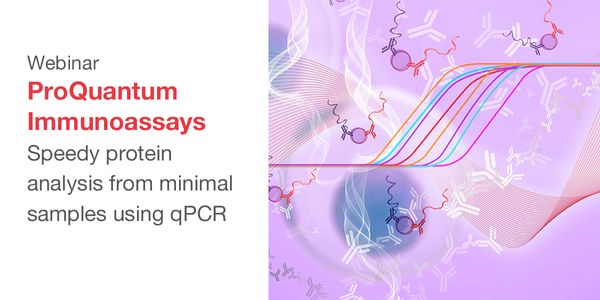Communication
Communication is a Latin word which signifies 'to share'. It is the sharing of data between various people. It is major to the presence and endurance of people just as to an association
-
MAR 13, 2019 | 8:40 AMHumans have a remarkable ability to flexibly interact with the environment. A compelling demonstration of this cognitive flexibility is our ability to perform complex, yet previously un-pract...MAR 13, 2019 | 8:20 AMHumans interact with their environment in countless ways and can switch seamlessly between activities. Even for seemingly simple tasks, a variety of sensory inputs and contextual cues are int...MAR 13, 2019 | 7:00 AMNIH representatives from the BRAIN Initiative will be presenting an overview of the NIH BRAIN Initiative and describing funding opportunity announcements (FOAs) supporting impacts in human ne...FEB 27, 2019 | 3:00 PMIn today's presentation I will give an overview to developing NextGen ADCs. We will discuss everything from the beginning stages of development to the varying ADC combination therapies av...FEB 27, 2019 | 12:00 PMToo frequently the investigator will provide “scientific” reasons to justify precluding analgesics from experimental procedures that may involve more than momentary pain, often wi...FEB 14, 2019 | 1:30 PMPharmaceutical research and development efforts are often both inefficient and suffer from a high attrition rate of drug candidates within the clinical phase of development. Most drug t...FEB 14, 2019 | 12:00 PMThe lung is a highly complex organ, comprised of more than 40 cell types that are responsible for various important functions, the lung’s complexity contributes to the subsequent challe...FEB 14, 2019 | 10:30 AMThis presentation will discuss and review the promise and potential of 3D Microtissues, and the challenges of using these Microtissues as Hazard ID tools. Lastly, we will discuss the potentia...FEB 14, 2019 | 9:00 AMThe goal of transforming one’s pipeline to a steady source of usable data is within our reach. Data that could be used for clinical insights or earlier in the drug discovery process. &n...FEB 14, 2019 | 9:00 AMExperimental models that promise to replace animal tests that are currently required for drugs and chemicals are rapidly proliferating. This includes a number of novel solutions offered by bi...FEB 14, 2019 | 7:30 AMComparative oncology is the study of naturally-occurring cancers in pet animals (mainly dogs) to broaden and deepen our collective understanding of cancers in both companion species and human...Speaker: Amy LeBlanc, DVM DACVIMPresented at: Laboratory Animal Sciences Virtual Event Series 2019
FEB 14, 2019 | 6:00 AMApproximately 30% of drugs have failed in human clinical trials due to adverse reactions despite promising pre-clinical studies, and another 60% fail due to lack of efficacy. The NIH Tissue C...Speaker: Danilo Tagle, PhD, M.S.Presented at: Laboratory Animal Sciences Virtual Event Series 2019
FEB 14, 2019 | 6:00 AMAs we look towards data to help generate insight and analytics across the entire drug discovery value chain, learn how interconnected data is from the various stages of preclinical, clinical,...FEB 13, 2019 | 1:30 PMPreclinical drug discovery is at the edge of a major transformation that promises to improve translation to the clinic through enhanced acquisition and advanced analysis of data. While an imp...FEB 13, 2019 | 12:00 PMAnimal welfare is the most important issue in any in vivo laboratory. The ability to detect and intervene in cases where the conditions of animals may be deteriorating as well as the ability...FEB 13, 2019 | 10:30 AMXenobiotic-induced cardiotoxicity is a major concern for both pharmaceuticals and chemicals in the marketplace. For drugs, "Thorough QT/corrected QT (QTc)" (TQT) studies are corners...FEB 13, 2019 | 10:30 AMA collection of opinions, questions and other assorted thoughts about the intersection of these developing technologies and preclinical studies primarily focused on the early discovery (as op...Speaker: Sean Maguire, VMD, MS, DACLAMPresented at: Laboratory Animal Sciences Virtual Event Series 2019
FEB 13, 2019 | 9:00 AMIn biomedical research, data should be treated as first-class corporate assets--they were expensive to create, they are expensive to maintain, and they have future business value. The petabyt...Speaker: Chuck Donnelly , Julie MorrisonPresented at: Laboratory Animal Sciences Virtual Event Series 2019
FEB 13, 2019 | 7:30 AMDigitalization has transformed virtually every industry, but it has been slow to gain traction within the preclinical phase of the drug development journey. Recent advances in digital vivariu...Speaker: Szczepan Baran, VMD, MSPresented at: Laboratory Animal Sciences Virtual Event Series 2019
FEB 13, 2019 | 6:00 AMThe printing press, the automobile & the Internet are just a few technological achievements that have advanced our world. All were driven by human ingenuity: our innate creativity that in...FEB 12, 2019 | 8:00 AMDATE: February 12, 2019TIME: 8:00am PST Local and systemic inflammation typically involves one or more cytokine cascades, or pathways, whi...JAN 31, 2019 | 7:30 AMProdrugs are harmless in their native state, as they are not targeted by human enzymes. But they can be converted into highly toxic compounds (the “drug”) by viral or bacterial en...JAN 29, 2019 | 9:00 AMDATE: January 29. 2019TIME: 09:00am PST, 12:00pm EST In healthy tissue, a reservoir of stem cells gives rise to non-stem cells while simul...DEC 13, 2018 | 9:00 AMDATE: December 13 15,2018TIME: 09:00am PST, 12:00pm EST Breast cancers are classified into three main subtypes according to their receptor status: estrogen receptor-positive...
MAR 13, 2019 | 8:40 AM
Humans have a remarkable ability to flexibly interact with the environment. A compelling demonstration of this cognitive flexibility is our ability to perform complex, yet previously un-pract...
MAR 13, 2019 | 8:20 AM
Humans interact with their environment in countless ways and can switch seamlessly between activities. Even for seemingly simple tasks, a variety of sensory inputs and contextual cues are int...
MAR 13, 2019 | 7:00 AM
NIH representatives from the BRAIN Initiative will be presenting an overview of the NIH BRAIN Initiative and describing funding opportunity announcements (FOAs) supporting impacts in human ne...
FEB 27, 2019 | 3:00 PM
In today's presentation I will give an overview to developing NextGen ADCs. We will discuss everything from the beginning stages of development to the varying ADC combination therapies av...
FEB 27, 2019 | 12:00 PM
Too frequently the investigator will provide “scientific” reasons to justify precluding analgesics from experimental procedures that may involve more than momentary pain, often wi...
FEB 14, 2019 | 1:30 PM
Pharmaceutical research and development efforts are often both inefficient and suffer from a high attrition rate of drug candidates within the clinical phase of development. Most drug t...
FEB 14, 2019 | 12:00 PM
The lung is a highly complex organ, comprised of more than 40 cell types that are responsible for various important functions, the lung’s complexity contributes to the subsequent challe...
FEB 14, 2019 | 10:30 AM
This presentation will discuss and review the promise and potential of 3D Microtissues, and the challenges of using these Microtissues as Hazard ID tools. Lastly, we will discuss the potentia...
FEB 14, 2019 | 9:00 AM
The goal of transforming one’s pipeline to a steady source of usable data is within our reach. Data that could be used for clinical insights or earlier in the drug discovery process. &n...
FEB 14, 2019 | 9:00 AM
Experimental models that promise to replace animal tests that are currently required for drugs and chemicals are rapidly proliferating. This includes a number of novel solutions offered by bi...
FEB 14, 2019 | 7:30 AM
Comparative oncology is the study of naturally-occurring cancers in pet animals (mainly dogs) to broaden and deepen our collective understanding of cancers in both companion species and human...
Speaker:
Amy LeBlanc, DVM DACVIM
Presented at: Laboratory Animal Sciences Virtual Event Series 2019
FEB 14, 2019 | 6:00 AM
Approximately 30% of drugs have failed in human clinical trials due to adverse reactions despite promising pre-clinical studies, and another 60% fail due to lack of efficacy. The NIH Tissue C...
Speaker:
Danilo Tagle, PhD, M.S.
Presented at: Laboratory Animal Sciences Virtual Event Series 2019
FEB 14, 2019 | 6:00 AM
As we look towards data to help generate insight and analytics across the entire drug discovery value chain, learn how interconnected data is from the various stages of preclinical, clinical,...
FEB 13, 2019 | 1:30 PM
Preclinical drug discovery is at the edge of a major transformation that promises to improve translation to the clinic through enhanced acquisition and advanced analysis of data. While an imp...
FEB 13, 2019 | 12:00 PM
Animal welfare is the most important issue in any in vivo laboratory. The ability to detect and intervene in cases where the conditions of animals may be deteriorating as well as the ability...
FEB 13, 2019 | 10:30 AM
Xenobiotic-induced cardiotoxicity is a major concern for both pharmaceuticals and chemicals in the marketplace. For drugs, "Thorough QT/corrected QT (QTc)" (TQT) studies are corners...
FEB 13, 2019 | 10:30 AM
A collection of opinions, questions and other assorted thoughts about the intersection of these developing technologies and preclinical studies primarily focused on the early discovery (as op...
Speaker:
Sean Maguire, VMD, MS, DACLAM
Presented at: Laboratory Animal Sciences Virtual Event Series 2019
FEB 13, 2019 | 9:00 AM
In biomedical research, data should be treated as first-class corporate assets--they were expensive to create, they are expensive to maintain, and they have future business value. The petabyt...
Speaker:
Chuck Donnelly
, Julie Morrison
Presented at: Laboratory Animal Sciences Virtual Event Series 2019
FEB 13, 2019 | 7:30 AM
Digitalization has transformed virtually every industry, but it has been slow to gain traction within the preclinical phase of the drug development journey. Recent advances in digital vivariu...
Speaker:
Szczepan Baran, VMD, MS
Presented at: Laboratory Animal Sciences Virtual Event Series 2019
FEB 13, 2019 | 6:00 AM
The printing press, the automobile & the Internet are just a few technological achievements that have advanced our world. All were driven by human ingenuity: our innate creativity that in...
FEB 12, 2019 | 8:00 AM
DATE: February 12, 2019TIME: 8:00am PST Local and systemic inflammation typically involves one or more cytokine cascades, or pathways, whi...
JAN 31, 2019 | 7:30 AM
Prodrugs are harmless in their native state, as they are not targeted by human enzymes. But they can be converted into highly toxic compounds (the “drug”) by viral or bacterial en...
JAN 29, 2019 | 9:00 AM
DATE: January 29. 2019TIME: 09:00am PST, 12:00pm EST In healthy tissue, a reservoir of stem cells gives rise to non-stem cells while simul...
DEC 13, 2018 | 9:00 AM
DATE: December 13 15,2018TIME: 09:00am PST, 12:00pm EST Breast cancers are classified into three main subtypes according to their receptor status: estrogen receptor-positive...
























